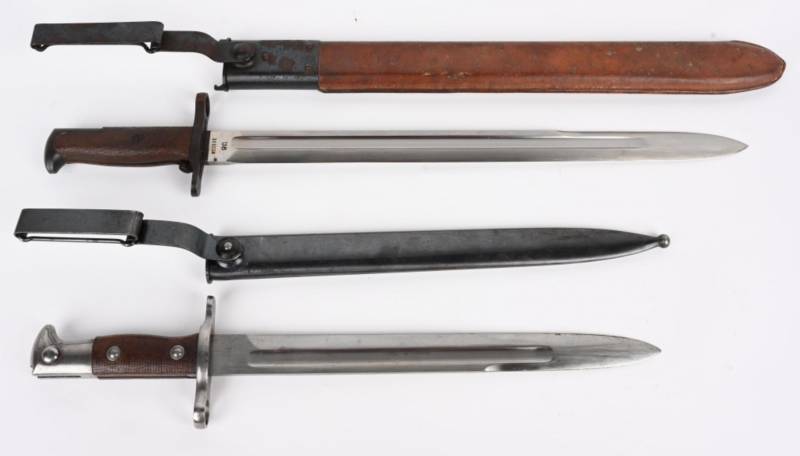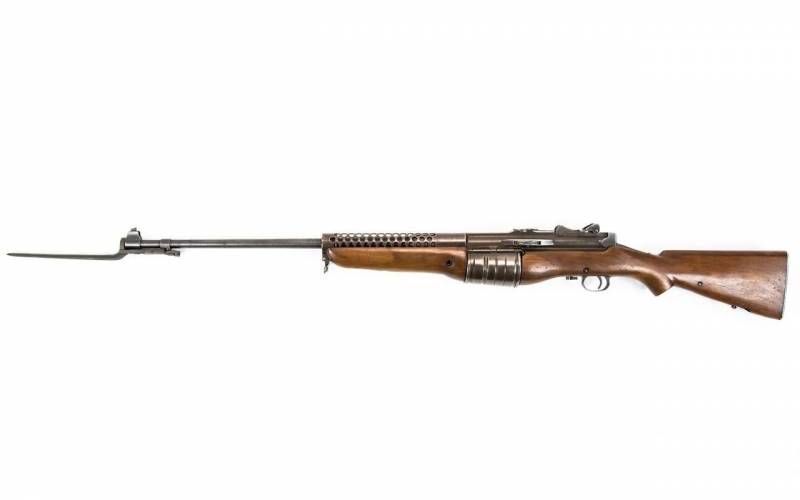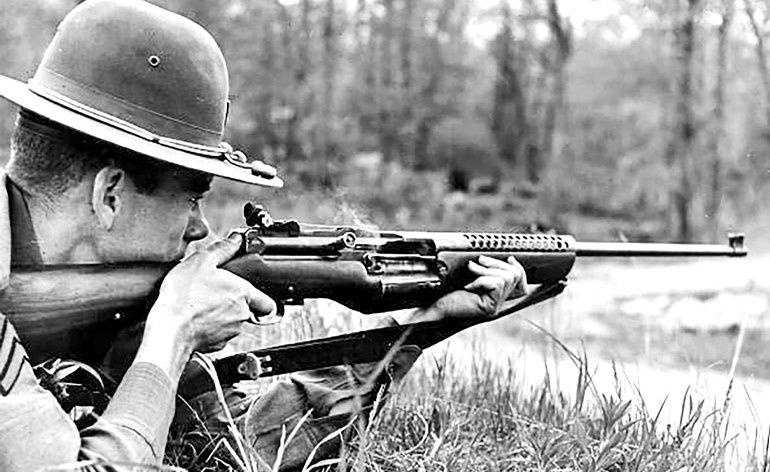Unexpected problems with Melvin Johnson's rifle
For example, when Melvin Johnson offered his rifle to the US Army, his system was doing very well in testing. It was the end of the 1930s, the Garanda rifle had just been adopted by the US Army, and unflattering reviews were still pouring from the units due to frequent automatic failures.
This resulted in the fact that in 1940 the gas outlet unit was completely redone on the M1 rifle. That is, in theory, Johnson had a chance to compete with the system of the Canadian Garand. But the military had several complaints about the Johnson rifle, one of the most serious being the inability to mount the bayonet. Now this may seem a little absurd, but in the 1930s it was more than a serious shortcoming in the eyes of the military.
More precisely - the bayonet on the rifle got up, but badly, not like that and not the same. Automation functioned due to the short stroke of the barrel, and a full-sized bayonet at the end of the barrel greatly influenced its operation. The standard at that time in the US Army was the M1905 bayonet with a blade length of just over 40 centimeters and a total length of more than half a meter, it weighed about 300 grams. Johnson did not even try to fit this design to his rifle. One of the first versions of the Johnson rifle suggested the possibility of installing a shorter and lighter bayonet from the American rifle of the 1892 model of the year (Krag-Jørgensen).

To do this, it was necessary to build a full-fledged forearm around the movable barrel with an influx for attaching the bayonet. The bayonet on this version of the rifle felt great, but the system with a short barrel stroke - not so much. Began delays and failures in the operation of automation.
In general, this was only a confirmation of the fact that it was already clear that it was critically important not to load the barrel.

Trying to please the American military and at the same time realizing that a full-fledged bladed bayonet could not be put on a rifle, Johnson undertook a series of experiments.
In particular, a long bladed bayonet was put on the rifle, which was attached to a ledge on the forearm and passed under the barrel. The result was a monstrous design, reminiscent of weapon from the fantasy world. As expected, the US military was not satisfied with this decision.

After long trials and tests, a seemingly optimal solution was found. A small needle bayonet was installed directly on the barrel. But the US Army was not satisfied with this. According to army officials, a miniature needle bayonet with a needle just over 19 centimeters long was more of a half-measure than a full-fledged weapon in hand-to-hand combat.

In addition, all tests somehow showed that Johnson's rifle feels best without a bayonet at all. Outstanding results were shown by samples that did not even have a fastening for a needle bayonet.

It all resulted in the fact that the Johnson rifle was never adopted by the US Army. The point here, however, was not only the impossibility of installing a bayonet, but that it was possible to overcome problems in the operation of the automatic rifle of the Garand system, plus this rifle was already being produced. The main drawback of the Johnson rifle was that it appeared late.
True, there were still buyers for Johnson's creation. The Royal Dutch East Indies Army needed weapons quickly and in abundance. The Dutch were well aware that they would have to face direct confrontation with Japan. So they were ready to buy rifles even with rudimentary bayonets or none at all. But the Dutch managed to get only 1 rifles before the Japanese invasion of the Dutch East Indies began.
Due to the fact that most of the rifles ordered by the Dutch remained in the United States, the Johnson system rifle did end up in the US armed forces, though not in the army, but in the US Marine Corps. The Marines, who, with the entry of the United States into World War II, were in dire need of modern weapons, simply expropriated some of the rifles that were not shipped to the Dutch East Indies. They got into service with units where one of the brainchild of Melvin Johnson had already served, namely, a light machine gun of his design, in part of the paratroopers of the Marine Corps.
With the entry of the United States into World War II, it became clear that, in general, the American military was right, and a bayonet on a rifle is a minor, but necessary thing. The US Army felt this especially sharply in the Pacific theater of operations, where they had to face an enemy who liked to go into bayonet attacks, and even attached bayonets to light machine guns. Ironically, it was in the Pacific theater of operations that the Americans used the Johnson rifles.
Information